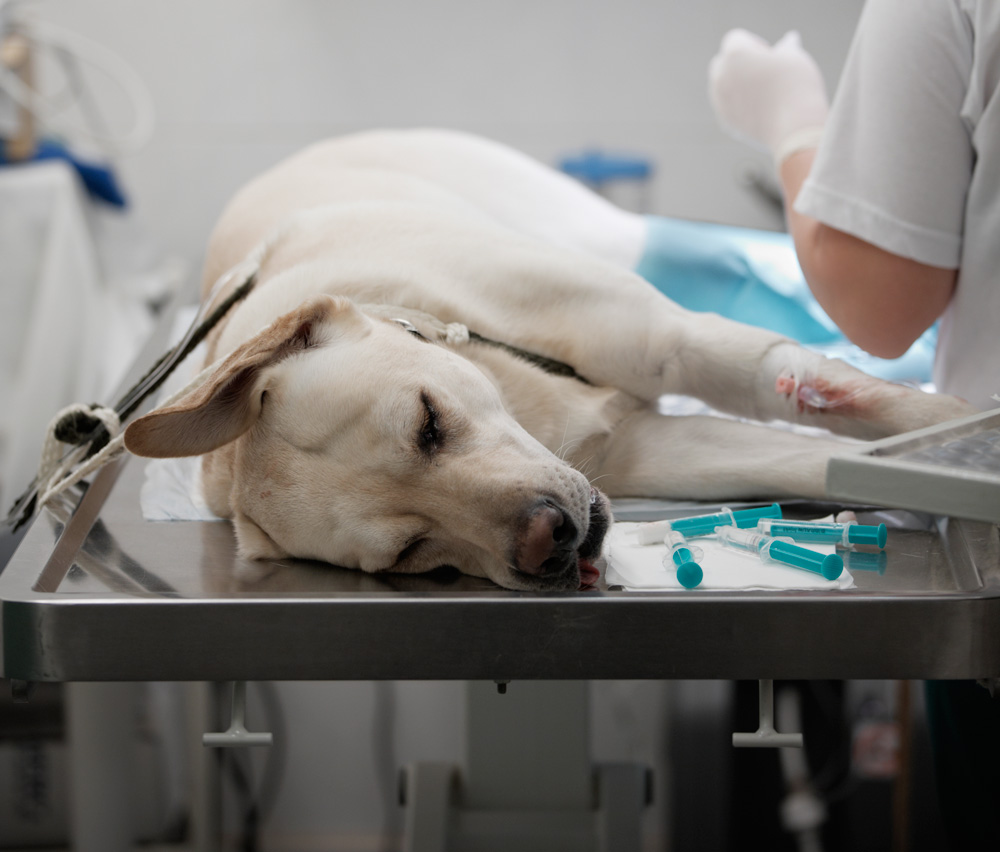How to Spot Bloat in your Dog
04/09/2017
Bloat, or gastric dilatation volvulus, can be deadly for dogs, with a 50% chance of survival in each case. We take a more in-depth look at this serious condition and find out which breeds it affects most. We’ll look at what you can do to avoid it and what to do if you suspect your dog has it.
What is bloat?
‘Proper’ Bloat is a failure of the normal digestion cycle that causes a build up of gas in the stomach. This gas cannot be expelled either as a burp or wind. In fact, a dog that is burping, vomiting or passing wind is almost certainly not suffering from bloat. If not caught early, the stomach also becomes twisted. This restricts blood flow to the heart and other organs, sending a dog into shock and then cardiac arrest. This can all happen within a couple of hours of the onset of bloat. It is extremely dangerous for dogs and can even be fatal.
Causes
Scientists are currently unsure of the exact trigger for an episode of bloat. However several risk factors are thought to contribute including: eating one large meal per day, exercise just before or straight after eating and drinking large amounts of water in one go during meals.
Any dog can get bloat, however deep-chested breeds are particularly prone. A deep-chest is long, but narrow. Breeds such as Bloodhounds, Labradors, German Shepherds, Viszlas, Weimaraners, Italian Spinones, Greyhounds all have deep chests. Large and giant breeds of dog, such as Dogue de Bordeaux and St Bernard, are also at increased risk, as are underweight or thin dogs.
It is thought that stress may also play a role in bloat, so dogs that are particularly aggressive or alternatively very fearful or anxious may be more at risk. Statistically, dogs older than seven years of age are more likely to suffer from bloat. It is also statistically more common in males than females.
Symptoms
Signs that your dog has bloat may include:
- Excessive drooling.
- Trying to vomit or defecate but nothing appearing.
- Looking anxious.
- Pacing.
- Not seeming like their normal self.
Is it possible to avoid bloat?
Some precautions that may prevent bloat include:
- Offering two or more smaller meals, rather than one large meal per day.
- A normal amount of fresh water available at all times except at meals.
- No exercising or playing just before or straight after meals.
- No raised-up food bowls.
- Food bowls designed to slow eating.
- A calm eating environment for dogs with elevated stress levels.
How is it treated?
It is vital to seek treatment from a vet urgently as soon as you suspect bloat. You know your dog best, so trust your instincts. A change in behaviour is often the first symptom, therefore if your dog seems out of sorts and there is no obvious reason, be prepared for a visit to the vet. The vet will give fluids, antibiotics or steroids via an IV for a dog in shock. They will put a tube down the dog’s throat to the stomach to relieve the build up of pressure. If a twist in the stomach is preventing the tube getting through, they will insert a hollow needle into the stomach to relieve pressure. An X-ray will be performed to assess the internal situation. Surgery may be necessary to untwist the stomach. During surgery, stitches may be put in to hold the stomach in place to prevent reoccurance.
Always consult a vet if you suspect your dog is showing symptoms of bloat or if you are at all concerned about their health.



